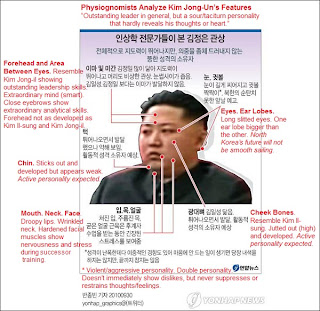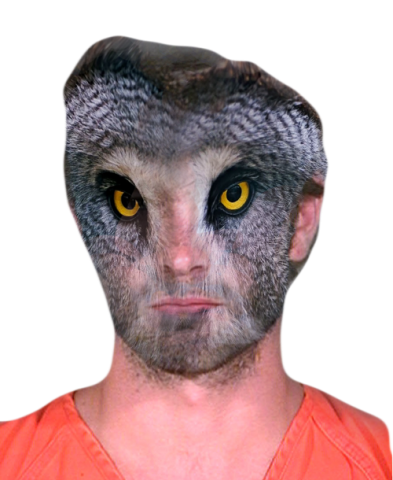Peephole
As Kyle McDonald so aptly puts it, the face is “one of the most salient objects in our day-to-day life.” It is arguably the most central means by which we communicate non-verbally with others, and is undoubtedly our most powerful tool for emotional expression. Given its primacy in these areas, I was interested in the history of the face in both art and science. After some research I stumbled upon the then science, now pseudoscience “Physiognomy”, which aims to judge one’s character and intellectual aptitude based on facial structure alone.
 Physiognomy still going strong in North Korea, here applied to judge Kim Jong-Un’s leadership potential
Physiognomy still going strong in North Korea, here applied to judge Kim Jong-Un’s leadership potential
While the field may not have contributed much to Western science, it did yield some beautiful illustrations.
 One of Charles Le Brun’s (1619 – 1619) anamorphic physiognomies
One of Charles Le Brun’s (1619 – 1619) anamorphic physiognomies
 Owl + Man in a fashionable orange jumpsuit
Owl + Man in a fashionable orange jumpsuit
Tapping into the idea of a human-animal hybrid, I composited a half owl half man chimera in Photoshop. One can spy on this chimera through a keyhole. Although the face itself does not respond to the user, the scene does. By moving one’s head back and forth, ones changes the perspective from which the creature can be seen, thus the illusion of depth. This effect is called parallax, and the layers of images move at distinct speeds accordingly. I applied a fisheye filter to the assets that lie behind the keyhole, so as to give the impression of looking through a piece of curved glass.
Ideally, the face would respond to the user as well. However, for the purpose of this project, the parallax achieves some level of immersion on its own. I also think the voyeuristic quality of this piece reveals rich territory for future exploration/exploitation/exposition.
I used FaceOSC’s poseOrientation property to govern the rotation of the head (a texture on a cylinder), the posePosition property to pan the images, and the poseScale property to control the zoom level of the scene.